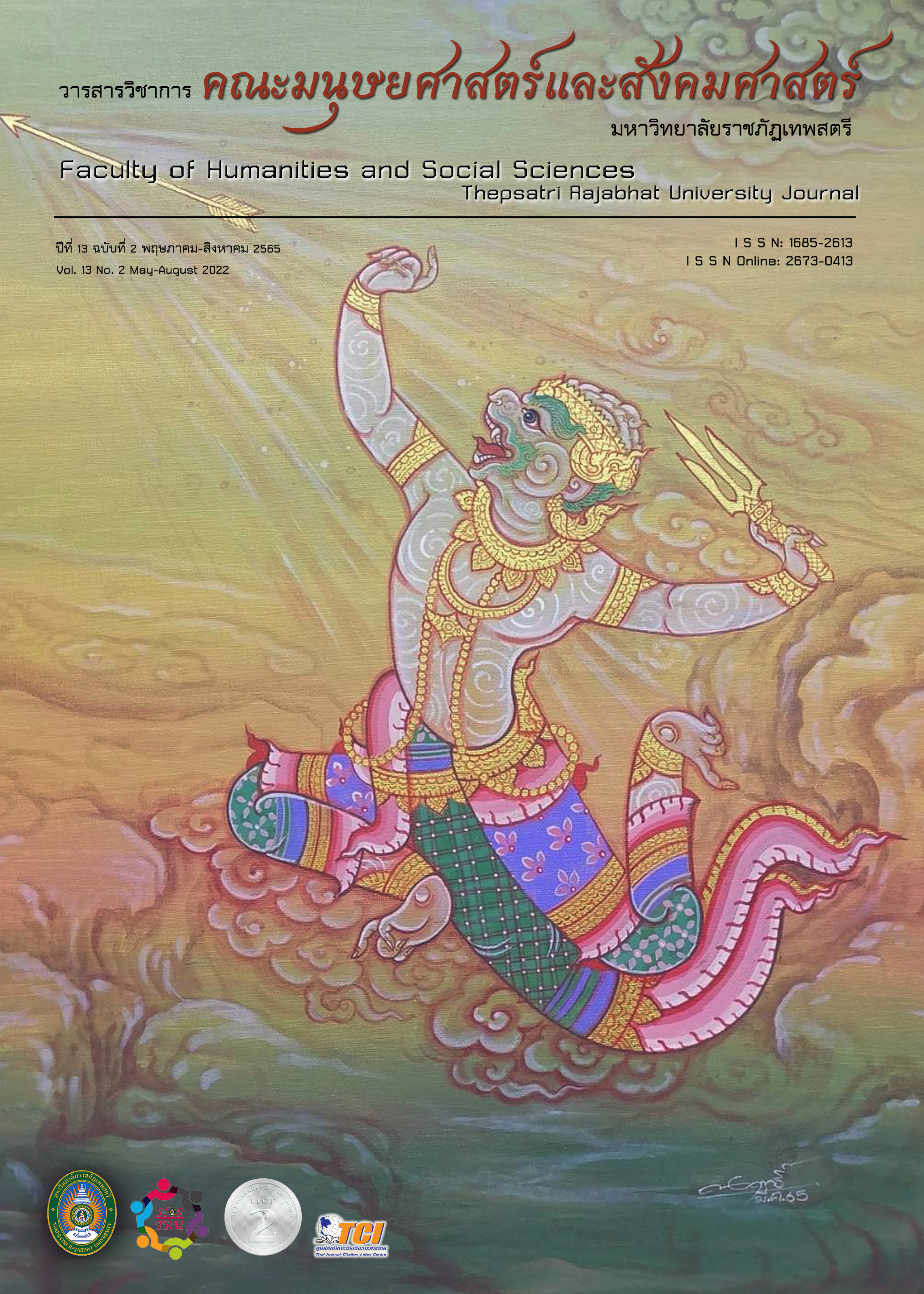Flood Disaster Risk Mapping with Geographic Information Systems Dan Makham Tia District, Kanchanaburi Province
Main Article Content
Abstract
This research had objectives in this study were; 1) To study the flooding disaster risk in Dan Makham Tia District from The Geographic Information Systems and 2) To analyze the vulnerable areas on flooding in Dan Makham Tia District from the Geographic Information System. This research used research tools include interviews and a vulnerability factor survey. The population and the samples group consisted of officers of the Local Government Organization in Dan Makham Tia District, Volunteer for disaster prevention and mitigation in the area, Disaster Victims' households and the rescue groups in the area using the Potential Surface Analysis (PSA) and The Risk Assessment using risk matrix tables. The risk studies were shown as a percentage value.
The results showed that: The disaster risk in Dan Makham Tia District from the Geographic Information System resulted in two conclusions as follows: First issue, the flood risk map from geographic information system. The results of the study are as follows; the high risk flooding areas account for 29.40 percent and the area most risks to flooding found scattered throughout on the plains accounted for 42.20 percent. The Second issue; The map of vulnerability to floods consider the effects of the risk factors and flood adaptation capacity of households. The overall analysis of vulnerability shows that 1 household has a high level of vulnerability to flooding and 27 households that are vulnerable to flooding at a moderate level. The research results have led to an upgrade in flood management, thus creating an action plan for using maps to develop the capacity of local administrative organizations, namely pre-disaster, during the disaster, and post-disaster action plans of the local government organization in Dan Makham Tia District, Kanchanaburi.
Downloads
Article Details

This work is licensed under a Creative Commons Attribution-NonCommercial-NoDerivatives 4.0 International License.
The content and information presented in articles published in the Academic Journal of the Faculty of Humanities and Social Sciences, Thepsatri Rajabhat University, are solely the opinions and responsibilities of the respective authors. The editorial board of the journal neither necessarily agrees with nor assumes any responsibility for such content in any manner whatsoever.
All articles, information, content, and images published in the Academic Journal of the Faculty of Humanities and Social Sciences, Thepsatri Rajabhat University, are the copyright of the journal. Any person or organization wishing to reproduce, disseminate, or otherwise utilize all or any part thereof must obtain prior permission from the Academic Journal of the Faculty of Humanities and Social Sciences, Thepsatri Rajabhat University.
References
คณะกรรมการป้องกันและบรรเทาสาธารณภัยแห่งชาติ. (2558). แผนการป้องกันและบรรเทาสาธารณภัยแห่งชาติ พ.ศ. 2558. กรุงเทพฯ: กรมป้องกันและบรรเทาสาธารณภัย.
ไชยพร ยุกเซ็น. (2557). การบริหารจัดการทางการแพทย์ในภาวะอุบัติภัยหมู่ Majorincident Medical Management and Support: MIMMs. ใน ไชยพร ยุกเซ็นและยุวเรศ สิทธิชาญบัญชา (บก.), ถึงเวลาเผชิญภัยพิบัติ Time To Cope With Disaster (หน้า 22 - 40). กรุงเทพฯ: ช่อระกาการพิมพ์.
พลภัทร เหมวรรณ. (2556). คู่มือปฏิบัติการระบบสารสนเทศภูมิศาสตร์เบื้องต้นด้วยโปรแกรมปฏิบัติการระบบสารสนเทศภูมิศาสตร์เปิดรหัส Map Window GIS. นครปฐม: มหาวิทยาลัยศิลปากร.
พรชัย เอกศิริพงษ์, และสุเพชร จิรขจรกุล. (2557, กันยายน - ธันวาคม). การประยุกต์ระบบสารสนเทศภูมิศาสตร์เพื่อการวิเคราะห์พื้นที่เสี่ยงภัยน้ำท่วมในเขตเทศบาลนครเชียงใหม่. Thai Journal of Science and Technology, 3(3), 148 – 159.
ลิขิต น้อยจ่ายสิน. (2559, มกราคม–เมษายน). การประยุกต์ระบบสารสนเทศทางภูมิศาสตร์ เพื่อประเมินพื้นที่เสี่ยงภัยน้ำท่วมในจังหวัดสระแก้ว. วารสารวิทยาศาสตร์บูรพา มหาวิทยาลัยบูรพา, 21(1), 51 – 63.
องค์การบริหารส่วนตำบลด่านมะขามเตี้ย. (2560). บันทึกข้อมูลอุทกภัย. กาญจนบุรี: ผู้แต่ง.
ADPC and UNDP. (2015). Interim Report: Development of Climate/Disaster Risk Assessment and Application of Risk Information in Development Planning in Thailand. Under the Project for Mainstreaming Climate Change Adaptation and Disaster Risk Reduction into Development Planning in Thailand (MADRiD).
Australian Greenhouse Office. (2005). Climate Change Risk and Vulnerability: Promoting An Efficient Adaptation Response in Australia. Sydney: Australian Greenhouse Office.
Bloom, B.S. (1968, May). Learning for Mastery. Instruction and Curriculum. Regional Education Laboratory for The Carolinas and Virginia, Topical Papers and Reprints, Number 1. Evaluation Comment, 1(2), 1 - 12.
Langan, J. C. (2005). Disaster: A Basic Overview. In J. C. Langan & CO. James (Eds.), Preparing Nurses For Disaster Management (pp. 1 - 16). Upper Saddle River, NJ: Pearson Prentice Hall.
Rendani, B. M., &et al. (2019). An Assessment of Flood Vulnerability and Adaptation: A Case Study of Hamutsha-Muungamunwe Village, Makhado Municipality. Journal of Disaster Risk Studies, 11(2), a692. 1 – 8.
Saaty, T.L. (2000). The Analytic Hierarchical Process. McGraw-Hill: New York.
Université Catholique de Louvain. (2010). Emergency Events Database EM-DAT International Disaster Database. Brussels: Belgium.


